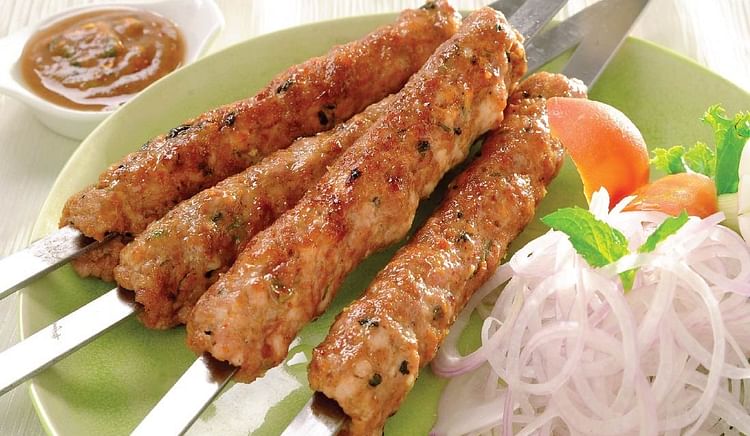
So, you always thought that the only thing that differentiated the two kababs that come from in and around Lucknow was the shape? Actually, there are a whole lot of factors to keep them nearly as far apart as cumin and coriander.
First the similarities. Both are made with extremely finely-ground lamb mince, to the point where the fibres of the lamb are completely broken. Both are made using a melange of spices, including chilli for a hint of heat. That’s it. There’s no other similarity.
The Kakori uses a high percentage of lamb fat (mainly from around the kidneys) and a touch of Khoya. The sweet spices used all revolve around mace (Jaiphal) and include green cardamom and dried rose petals. A spicy note is injected via the water in which green chillies have been soaked. Kakori kababs are ‘threaded’ on to skewers and cooked over lighted coals in a Bhatti. There are several theories about their provenance, none of which can be validated beyond doubt, but it is safe to say that they are a relatively recent invention, hundred years old or less.
The Galouti Kabab is made with a tenderising agent – raw papaya – whose active ingredient breaks down the fibres of the meat. Because of this, there is no real requirement to have fat added to the mixture, and so, it takes far less fat than the Kakori. To mask the taste of the softener, Galouti Kababs are typically spicier, and yellow chilli as well as long pepper (pipli) are used together with other spices. Galouti kababs are formed into patties and cooked on a utensil called a Mahi Tawa.
Oh, and we almost forgot. There is one more similarity - nobody can eat just one!
Written By
Appearing incognito is The Phantom's style, so we are keeping this identity under wraps. What we can tell you is that this is one food critic that has earned the respect of restaurateurs and foodies alike. With an astute palate and an adventurous spirit, the Phantom Critic has more than 20 years of experience writing about food and reviewing restaurants

